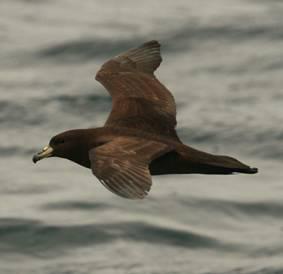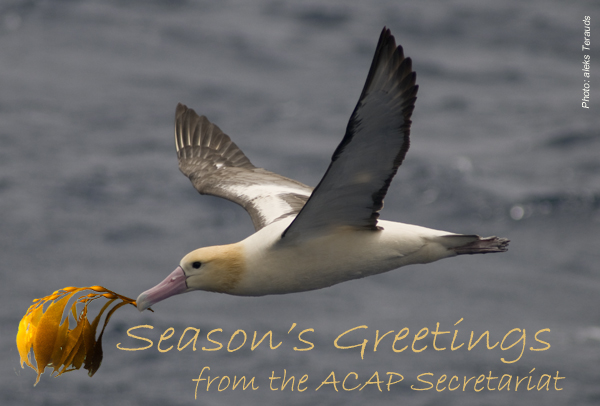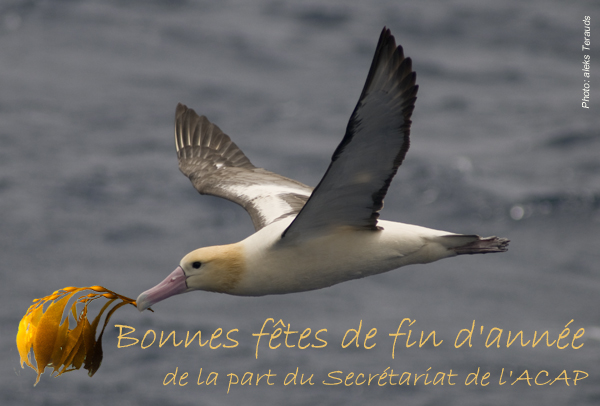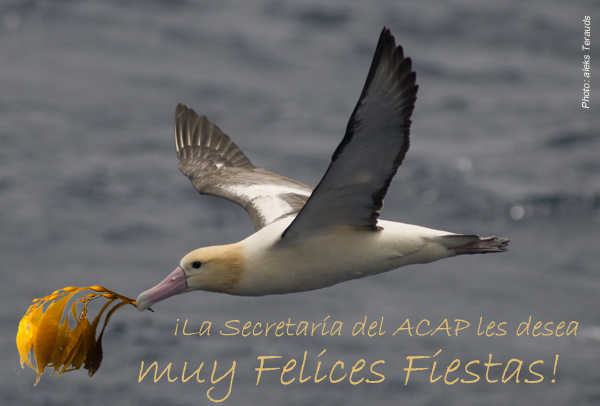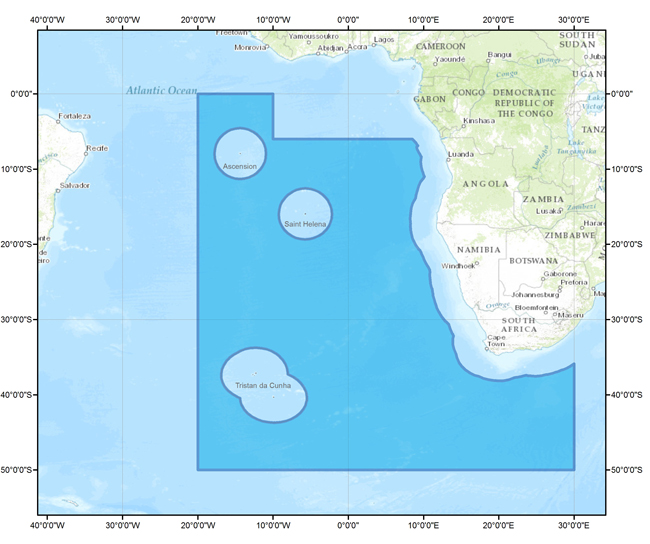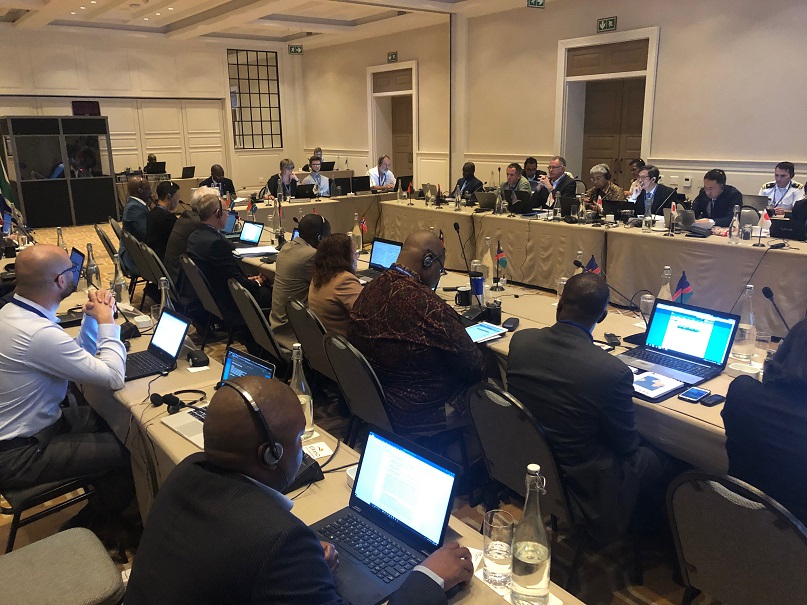Inaccessible Island, one of the United Kingdom’s Tristan da Cunha islands, is part of a World Heritage Site in the South Atlantic. Uninhabited and hard to land on – hence its name – it is rarely visited by marine ornithologists. Supporting four ACAP-listed species and free of introduced mammals it is an important seabird island.
At roughly decadal intervals since 1989, small research teams from the University of Cape Town’s
FitzPatrick Institute of African Ornithology, led by its current Director, Peter Ryan, have visited Inaccessible to survey and study its birds, including Tristan (Gony*)
Diomedea dabbenena, Atlantic Yellow-nosed (Molly)
Thalassarche chlororhynchos and Sooty (Peeoo)
Phoebetria fusca Albatrosses and Spectacled Petrels (Ringeye)
Procellaria conspicillata.
The most recent survey, the fourth by the FitzPatrick Institute, has recently taken place, with 75 days spent ashore from mid-September to late November. Overall, the island’s seabird populations appear healthy, with increases in some of those surveyed, as summarized below for the ACAP-listed species.
Tristan Albatross
Two chicks of this Critically Endangered species were seen on the island for the first time since 1988, confirming that the island’s tiny relict population of just a handful of pairs continues to survive – in some years no chicks have been recorded.
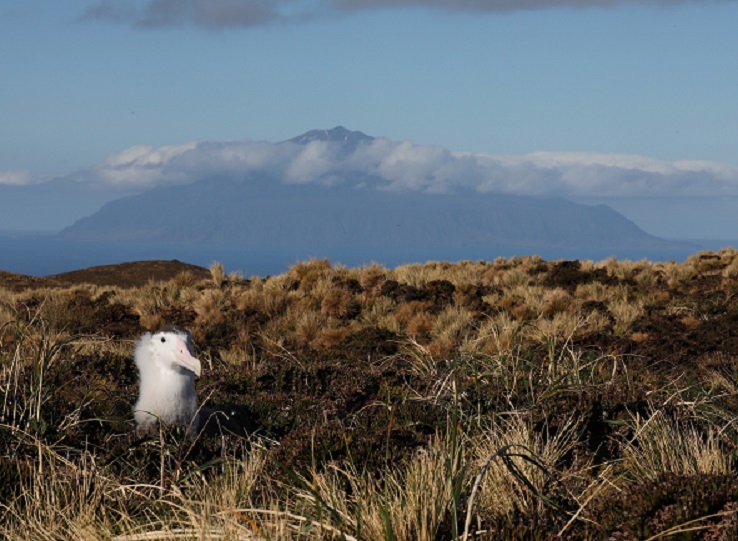
One of the two Tristan Albatross chicks on Inaccessible Island in summer 2018/19. The main island of Tristan da Cunha towers in the background 31 km away
Atlantic Yellow-nosed and Sooty Albatrosses
Numbers of both of these globally threatened species in monitoring areas were higher than in 2004 or 2009. A total of 22 GPS-loggers was deployed on Atlantic Yellow-nosed Albatrosses (Endangered) to compare with tracking data from birds tagged on nearby Nightingale Island in the same season by Richard Phillips of the British Antarctic Survey. Twenty of the loggers were recovered before the team left the island, of which 18 were successfully downloaded.
Spectacled Petrel
The Vulnerable Spectacled Petrel population, an Inaccessible Island breeding endemic, continues to increase, with ongoing range extensions recorded in the east of the island. A new count approach using random transects, implemented with assistance from Tristan Conservation Department staff, suggests there may be as many as 30 000 occupied burrows on the island, considerably higher than the last estimate of 15 000 pairs in 2009, continuing the roughly 7% per year growth estimated since the 1930s.
As scientific papers emerge from this year’s surveys of the four ACAP species they will be featured in ACAP Latest News.
The Tristan Administrator, Island Council and Conservation Department gave approval for the Inaccessible Island research visit. Tristan Islanders Leo Glass, Julian Repetto and George Swain gave assistance in the field. The research team included Maëlle Connan (Zoology Department, Nelson Mandela University) and Ben Dilley (FitzPatrick Institute). The South African National Antarctic Programme provided berths on the S.A. Agulhas II and helicopter support.
*Tristan vernacular names in parentheses.
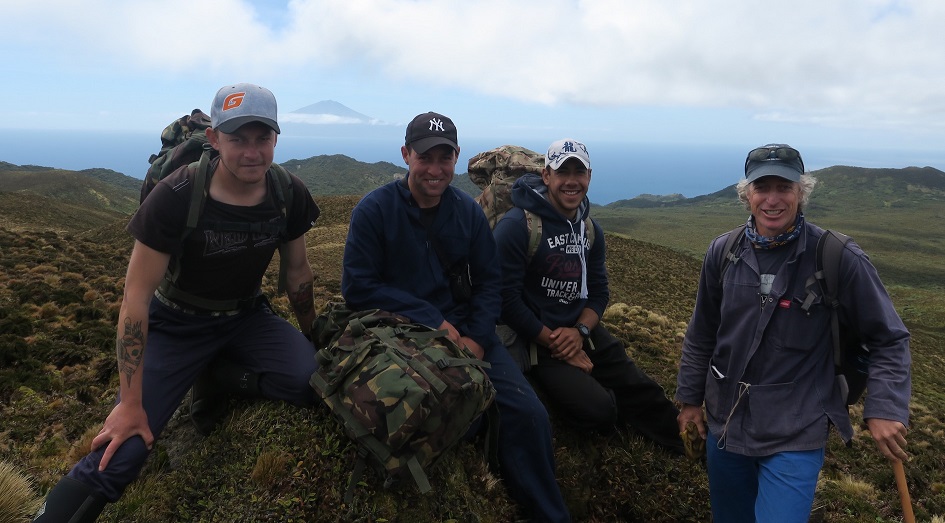
Ringeye survey team on Inaccessible Island’s Cairn Peak; from left to right: George Swain, Julian Repetto & Leo Glass (Tristan Conservation Department) and Ben Dilley (FitzPatrick Institute)
Photographs by Peter Ryan
Selected Literature:
McClelland, G.T.W., Bond, A.L., Sardana, A. & Glass, T. 2016. Rapid population estimate of a surface-nesting seabird on a remote island using a low-cost unmanned aerial vehicle. Marine Ornithology 44: 215-220.
RSPB & Tristan da Cunha Government 2010. Gough and Inaccessible Islands World Heritage Site Management Plan April 2010 – March 2015. [Sandy: Royal Society for the Protection of Birds & Edinburgh, Tristan da Cunha: Government of Tristan da Cunha]. 32 pp.
Ryan, P.G. 2005. Inaccessible Island Seabird Monitoring Manual. RSPB Research Report No.16. Sandy: Royal Society for the Protection of Birds. 32 pp.
Ryan, P.G. 2007. Field Guide to the Animals and Plants of Tristan da Cunha and Gough Island. Newbury, UK: Pisces Publications. 162 pp.
Ryan, P.G. & Moloney, C.L. 2000. The status of Spectacled Petrels Procellaria conspicillata and other seabirds at Inaccessible Island. Marine Ornithology 28: 93-100.
Ryan, P.G. & Ronconi, R. 2011. Continued increase in numbers of Spectacled Petrels Procellaria conspicillata. Antarctic Science 23: 332-336.
Ryan, P.G., Dorse, C. & Hilton, G.M. 2006. The conservation status of the Spectacled Petrel Procellaria conspicillata. Biological Conservation 131: 575-583.
Peter Ryan, FitzPatrick Institute, University of Cape Town & John Cooper, ACAP Information Officer, 20 December 2018


 English
English  Français
Français  Español
Español 